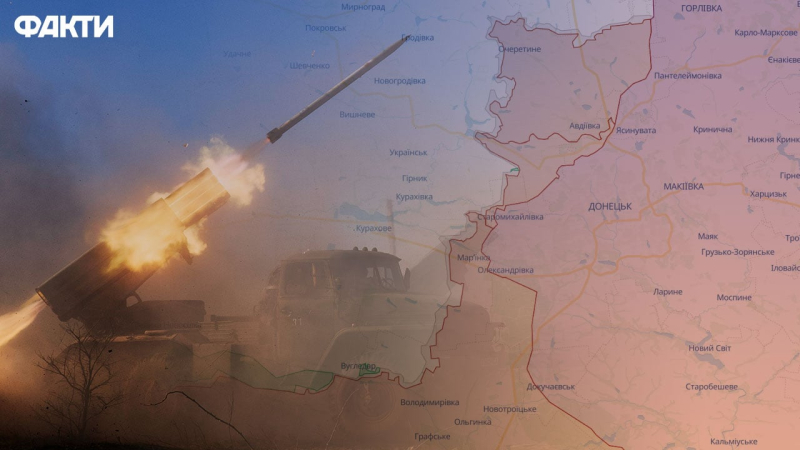
The last week was eventful, in particular: the introduction of sanctions against the Russian Federation, attacks on Russian targets in Crimea and other regions, the G7 summit and the like.
At the same time, the situation at the front, although partially stabilized in certain directions, has even worsened in some places, as the Russians are trying to make the most of the conditions in which they find themselves.
What is the situation at the front, what do the latest political events in Ukraine and the world mean, and also how the war could change when Russia exhausts its offensive resources? A military expert, the head of the Center for Military Security, told Facts ICTV about this. legal research Alexander Musienko and political scientist Oleg Sahakyan.
Now watching
Situation at the front
Recently, the situation in the north of the Kharkov region has stabilized, which is recognized by both officials, such as the head of the Kharkov Regional State Administration, and the military themselves. At the same time, the Russians have increased pressure on the Defense Forces in the Donetsk region, in particular in the Pokrovsky direction.
As Alexander Musienko points out, the hottest directions today are the Pokrovskoye, Kurakhovskoye directions, as well as the battles for Chasov Yar. The enemy is concentrating its main efforts on gaining new positions and advancing precisely in the Pokrovsky direction, where the invaders are conducting an intensive offensive.
— Somewhere there are certain tactical successes. Indeed, they have certain firing positions, which, unfortunately, they managed to take. But these successes are more tactical in nature, that is, local, which does not significantly affect the operational-strategic situation, — says the expert.
Musienko adds that the enemy intends, first of all, to reach the line to Pokrovsk.
— They set themselves this operational task: during this offensive, move forward from two flanks. To the north, it is directly in the Pokrovsky direction. To the south, this is through Kurakhovskoye, trying to bypass our defense lines, — says the head of the Center for Military Legal Research.
It is precisely in order to try to outflank and find loopholes or weak points in the Ukrainian defense that the enemy directs his efforts.
Musienko recalls that, according to high-ranking NATO officials, Ukraine inflicted record losses on Russian troops in May, amounting to about 30 thousand.
— We are approaching the line. We haven’t reached this limit yet, we need to reach somewhere between 32 thousand and 35 thousand. This is the number of losses for the Russians that will be difficult for them to recover. It will be difficult to restore through mobilization, — he says, explaining that today in Russia it is possible to mobilize about 30 thousand occupiers every month.
At the same time, in the direction of Chasovoy Yar, the enemy has had some successes in the Ivanovsky area and on the eastern outskirts of Chasovoy Yar, where there is a so-called microdistrict-canal.
— There they operate on the left bank of the Seversky Donets River, where they are trying to gain a foothold. Our forces, accordingly, knock them out from there, — says the expert.
Similarly, threats to the grouping of troops of the Ukrainian Defense Forces in the Kleshchievka area are growing, where the enemy is trying to operate and conduct outreach operations, that is, in fact, flank attacks.
— The capabilities of the Ukrainian Defense Forces have increased somewhat, because, let’s say, they have already reached such more stable volumes of logistics, support and delivery of what the West gives us. So, literally, somewhere from the beginning of June, we have already reached such volumes that make it possible to distribute it along the front, which gives our forces a chance to act, inflicting exactly those record losses that were in May, — he says
Regarding the Donetsk region, Musienko summarizes that Ukrainian defenders are holding back the enemy in the Ugledar area. At the same time, in the Vremovsky direction, the enemy had successes in the Staromayorsky area, although it still remains blocked there, without further advance.
In the southern directions, in Zaporozhye, in the Orekhovsky direction, the situation has not undergone significant changes. Here the enemy has increased the number of artillery strikes and the use of ballistic weapons directly against Zaporozhye, at facilities and along the front line, which is why settlements along the line of combat contact are suffering.
— They increased the frequency of strikes, probably in order to try to pin down some of our units, hold our forces, or force us to transfer certain forces there. At the same time, Ukrainian troops are also carrying out actions, striking the enemy in the Rabotino area, where they (the occupiers, — Ed.) are trying to act. The gray area has expanded there, — says Musienko.
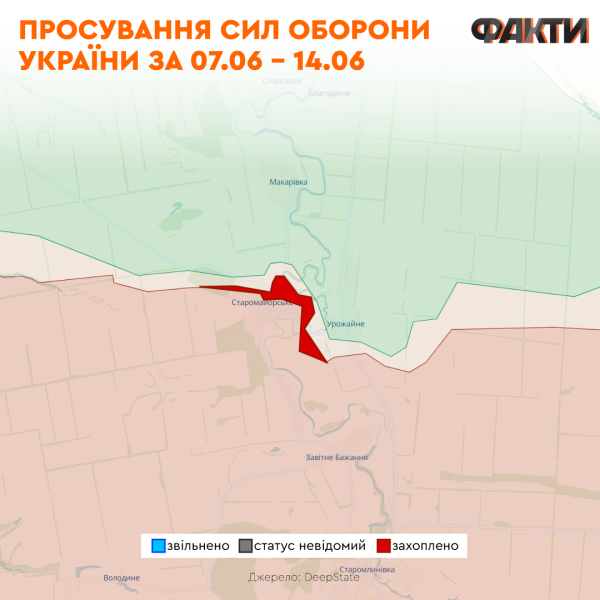
Infographics: our website
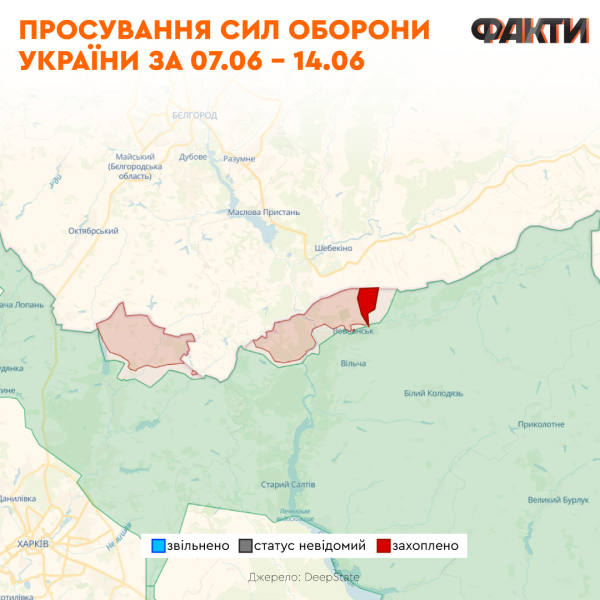
Infographics: our website
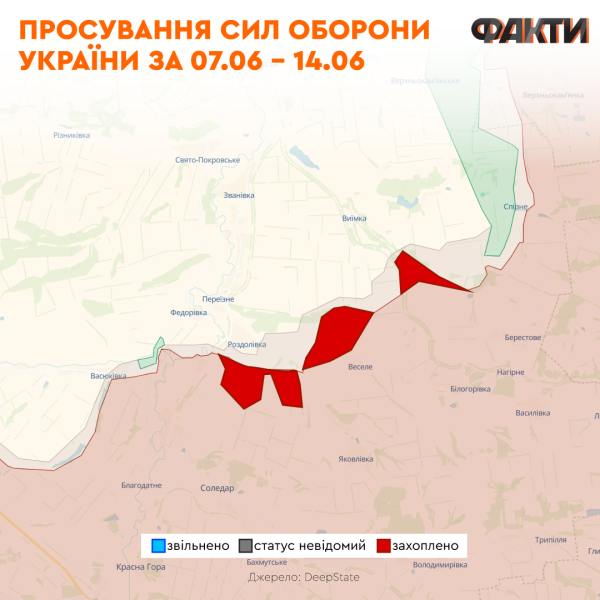
Infographics: our website
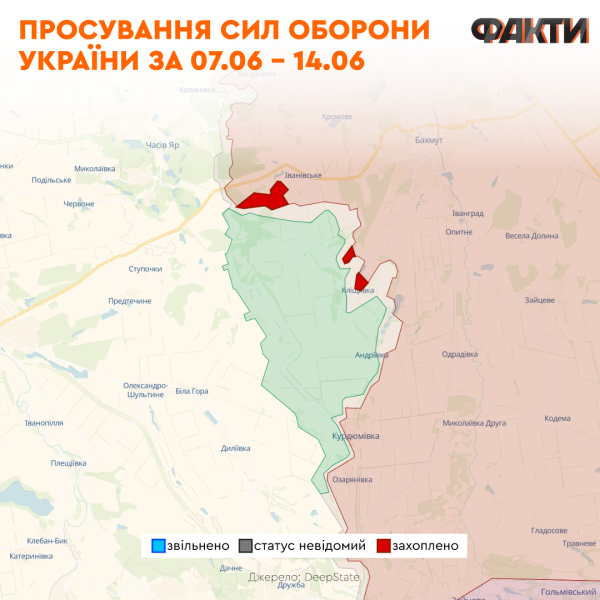
Infographics: our website
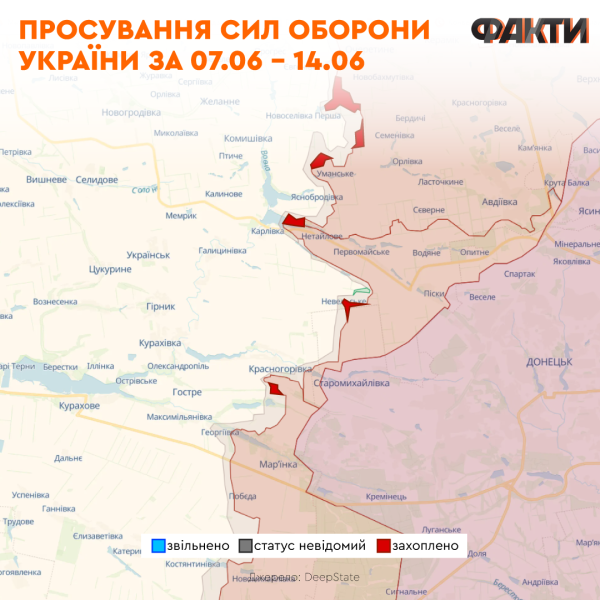
Infographics: our website
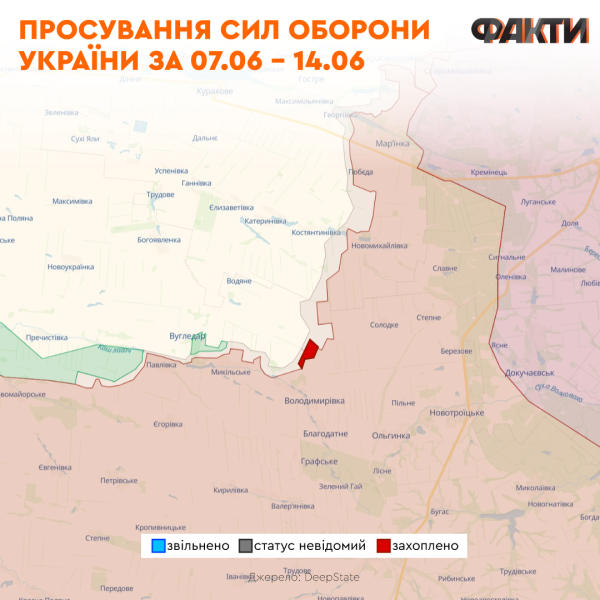
Infographics: our website
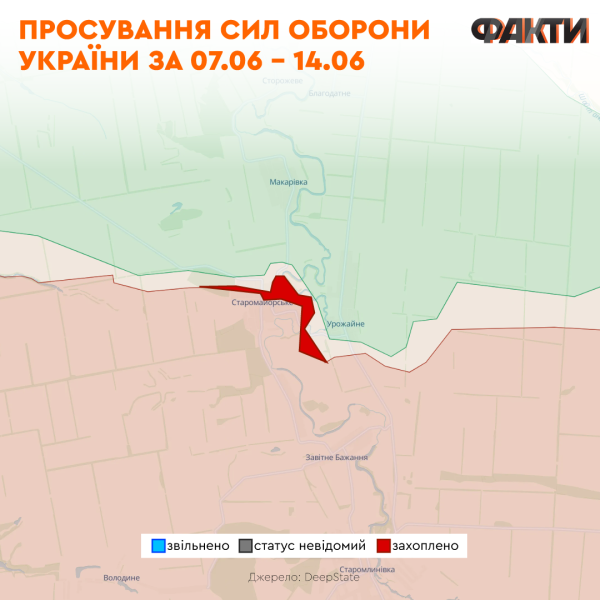
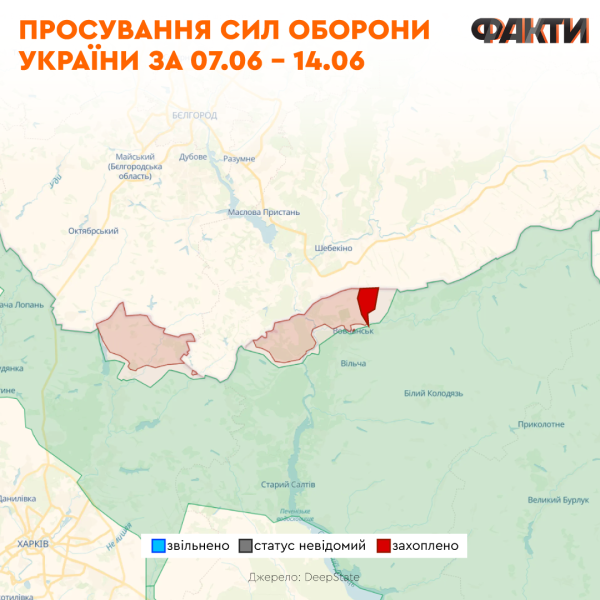
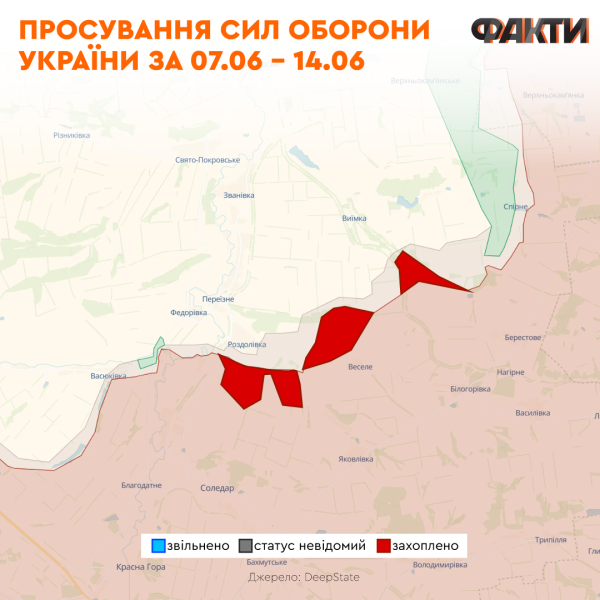
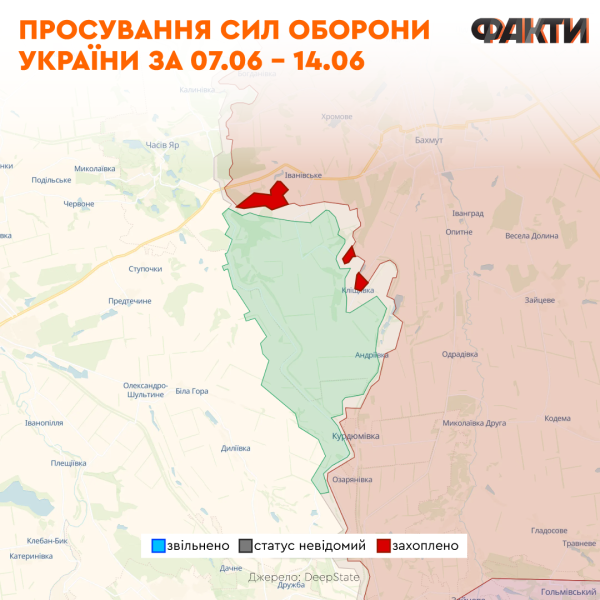
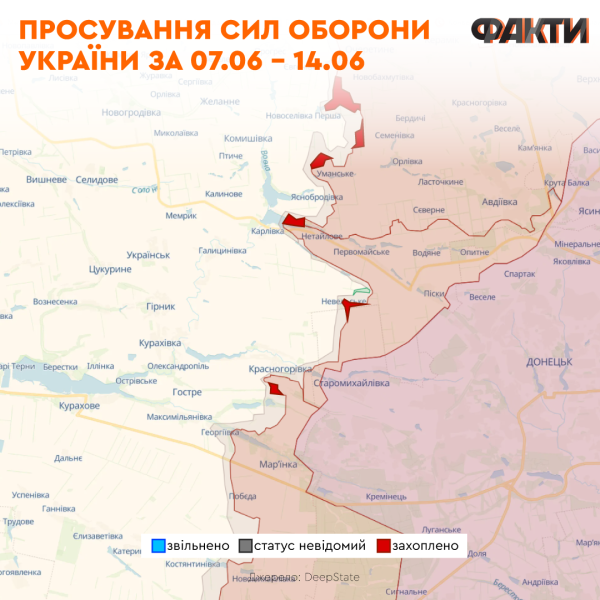
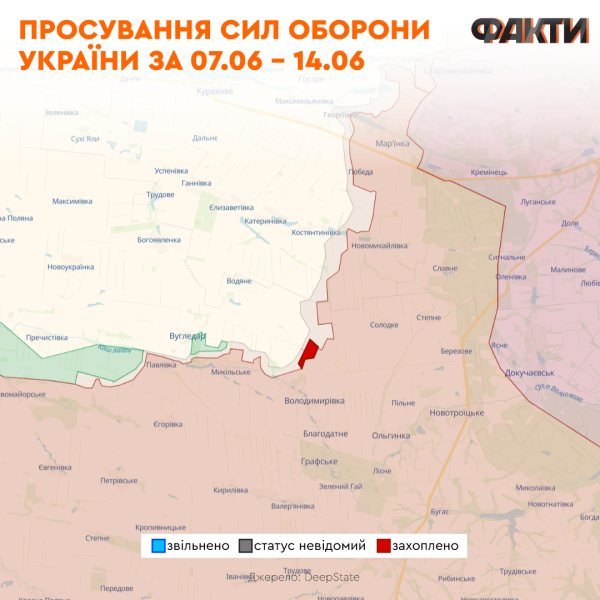
The military expert also commented on the situation at the bridgehead on the left bank of the Dnieper in the Kherson region.
— Bridgehead in Krynki on the left bank of the Kherson region, despite the fact that this is an insignificant small strip, which our Marines and other units heroically continue to hold, plays a certain role, because there it is possible to pin down certain enemy forces, thus preventing them from moving to other directions, — explains the expert.
As for the northern directions, in the Kupyansk direction the enemy has become somewhat more active over the past two weeks, compared to previous periods, and has had certain tactical successes. However, now this advance has been blocked by the Defense Forces.
About the north of the Kharkov region, where is the Volchansk direction, here are the enemy’s attempts to bypass our group from the east in the Volchansk area, they decided to carry out a maneuver there and conduct a flank attack to the east of Volchansk. This attempt was blocked. The highway between Shebekino and Volchansk was taken under the fire control of the Ukrainian Defense Forces. This prevents the enemy from moving normally.
— The enemy’s advance is also blocked, because the Russians are observing attempts at these two bridgeheads — in the Liptsov region in the Kharkov region and Volchansk — combine. There's about 10-11 km between them. Therefore, appropriate actions are traced there. Ukrainian forces are also blocking this, and are doing it quite successfully, — explains the expert.
In addition, by striking the Belgorod region, the Ukrainian Defense Forces forced the enemy to change plans, they began to disperse their forces.
— To date, no new offensive groupings or signs of the formation of offensive groupings of Russian troops near the Ukrainian border can be traced on the border with the Kharkov region. At the same time, this does not mean that the enemy has changed his plans. They continue to move immigrants from Asian countries, African mercenaries, etc., to the Belgorod region, — says Musienko.
Thus, the military expert states, in the Kharkov region, Ukrainian troops managed to pin down the enemy’s forces, so the enemy is forced to transfer them from the Donetsk region.
The effect that Russia hoped for was that Ukrainian forces would be forced to transfer all of their, almost all of their brigades and reserves there to the Kharkov direction, it works somewhat against the enemy, because they themselves are now forced to do this , — he says.
The window of opportunity for the Russian Federation is closing
Western supplies of weapons, additional air defense systems, permission to hit Russia with Western weapons, the formation of new brigades and the restoration of artillery reserves — all this led to Western media stating that the window of opportunity for Russia is gradually closing.
However, according to Musienko, it is too early to say that the window for Russia will close, since fairly intense fighting is still ongoing.
— Yes, Russia cannot make such a powerful breakthrough as they would like. But the enemy still has the initiative in a certain way, so we must now solve, let’s say, as it seems to me, an important priority task, that is, to stop the enemy’s advance. And this is what our forces do. How long can Russia remain on the offensive for so long? I don’t think it will be for long, — he says.
In parallel, we are actually observing the phase of the offensive that Ukrainian intelligence, the President of Ukraine, and Western partners had previously warned about, the expert says, but the enemy is also becoming exhausted.
— It seems that not all is well with the Russian army, since they… The offensive in the Kharkov region demonstrated this. They failed to penetrate deep into Ukrainian territory as they would have liked and achieve the results they set, — he explains.
Live ICTV Live Related materials How many Americans do not approve of the candidacies of Trump and Biden in the US elections — survey
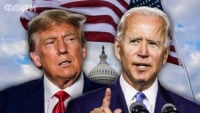
Ursula von der Leyen: Freezing the war in Ukraine is a recipe for further aggression
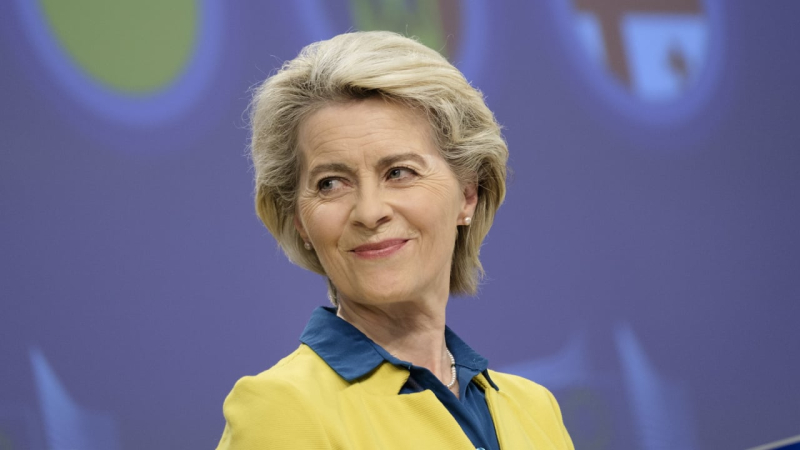
Scholz named the conditions for concluding a stable peace in Ukraine
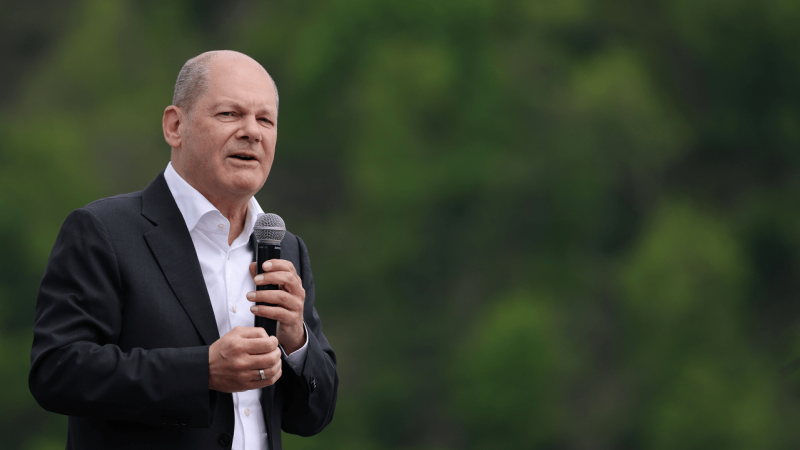
The peace summit in Switzerland does not provide for direct negotiations with the Russian Federation – Zhovkva

Peace summit, help from the United States and shelling of the Donetsk region: events of June 15
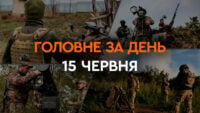
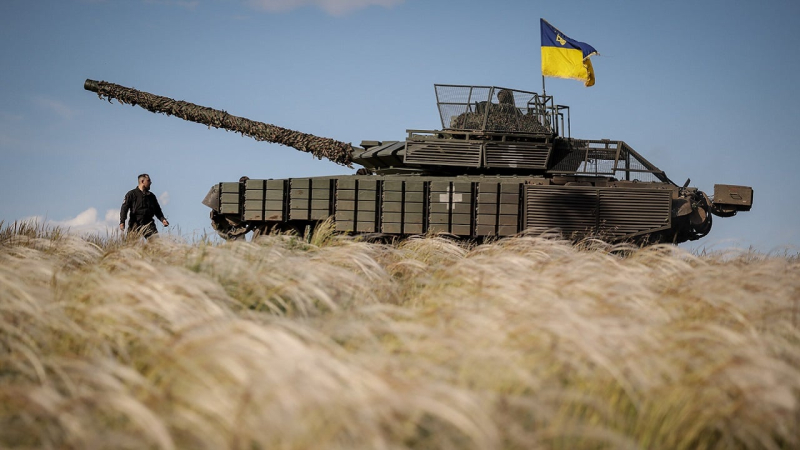
Photo: 24 OMBr im. King Danil
The second point is that now the volumes of supplies and assistance in general for Ukraine are really increasing.
— Will we have the opportunity to seize the initiative and go on a rapid offensive? Everything will depend on how much we can increase our forces during this time, accumulate our reserves. You see that in a certain way Russia was also able to somewhat unwind our reserves, which were deployed in the Kharkov region. It was impossible to act otherwise, since it was necessary to defend ourselves there. And then the question is the pace of supply of weapons and recruitment of our brigades. Including the issue of mobilization, which continues, and which, according to my sources in the General Staff, has improved somewhat, — he says.
Therefore, the expert summarizes, taking into account the preparation of the mobilization reserve, local operations of a tactical nature may be carried out by Ukraine, but in order to achieve a breakthrough, Ukraine needs aviation, more missiles and artillery.
— I can say that even those packages that are provided or provided for, they, one way or another, provide for both armored vehicles and assistance to our mechanized units and units. That is, this means that the West continues to support this component, which is needed, among other things, in order to seize the initiative. And then we'll see. It will depend on this whether we will be able to seize the initiative and make a breakthrough, or whether these will be tactical actions, somewhere we will advance, somewhere we will oust the enemy and concentrate on air and sea operations in the Crimea, destroying and taking out their equipment, inflicting damage on them colossal losses, isolating Crimea, — explains the expert.
Combat operations can also develop on land, but there are risks that everything will go into the positional phase.
Ukraine seizing the initiative
As for seizing the initiative, here, the military expert believes, everything will depend on the situation on the battlefield.
One scenario could be when Ukrainian troops give a counter battle and Ukraine will have reserves that it can attract.
— This reserve is waiting for this moment when we would give this oncoming battle, repulse an enemy attack somewhere on some sectors of the front, and as a result of this oncoming battle we would improve our position, carry out and improve our tactical situation. This could be in any area where the enemy makes a mistake, or where we inflict such losses that we will have opportunities and reserves ready for this. Therefore, from the point of view of seizing the initiative, planning larger-scale offensive actions and operations will depend on the operational situation on the battlefield. — he says.
At the same time, this will all depend on the decisions made by the General Staff of the Armed Forces of Ukraine.
The West Finding Its Determination
Since the beginning of summer, many events have occurred that were the result of the activities of Ukrainian diplomacy. Recently, Ukraine has received many military aid packages, signed security agreements with the United States and Japan, started the Peace Summit in Switzerland, took part in the G7 summit in Italy, sanctions were imposed on the main Russian exchanges, and the West decided to provide Ukraine with $50 billion from frozen assets of the Russian Federation.
Political scientist Oleg Sahakyan believes that it is now possible to observe that the West has passed its psychological and political barrier in seizing the initiative from the Russian Federation.
— Abandon the red line approach and, in fact, move on to proactively raising rates. Hence the provision of aircraft by France, the training of soldiers, and the discussion of coalitions to train the Ukrainian military on the territory of Ukraine. The United States provides permission to strike Russian territory with its own weapons, covering territories 200 miles (320 km) deep into Russia, but at the same time providing permission for specific types of weapons that reach a limit of up to 100 km, leaving still room for growth, which is declared to Russia .
There is also support of $50 billion and many other steps that demonstrate that the West has taken action and gained determination. Actually, before this, Ukraine was forced to constantly seize the escalatory initiative and demonstrate, literally trampling on these red lines, that they do not exist, forcing the West to react adequately in the situation, — he explains.
The expert recalls that subsequently the world saw that “these deposits of the extremely scarce resource of determination were found not only in Ukraine, but also in Europe”.
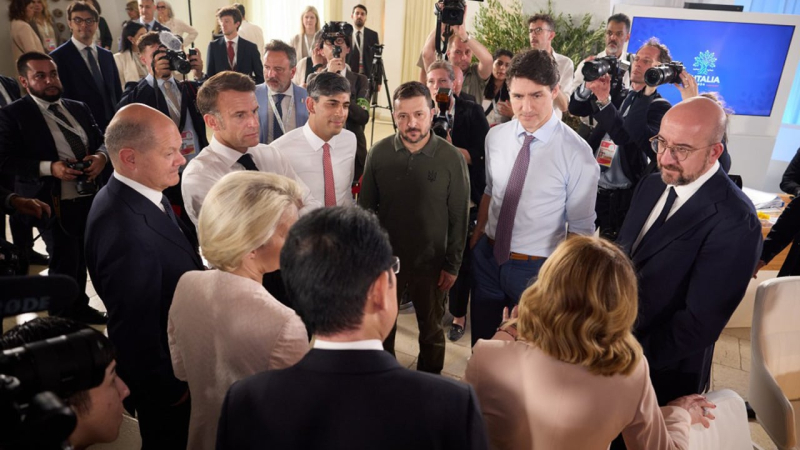
Photo: Office of the President
— After all, we see that the coalition of the determined has expanded to almost the entire European Union. First of all, France, northern European countries, part of central European countries. The Baltic countries had been there for a long time and were waiting for everyone else along with Britain, — he reminds.
According to Sahakyan, the United States dropped out of the topic of supporting Ukraine for six months, which Russia took advantage of and managed to raise its head and gather additional arguments that they would be able to win by military means.
— Now both the States and Europe had to make a decision to intercept the escalation initiative, — he says.
The second point is that we are talking about supporting Ukraine in the long term.
— A whole series of steps, both within the framework of the Ramstein format and the G7 format, which is the financial and sanctions part — all this is aimed at demonstrating that Russia has no chance in the long term. That support for Ukraine will be systemic and protracted. As much as needed. Not in order to declare that the war may last for who knows how long, but in order to demonstrate to Russia that Russia will not be able to sit out, win for a long time, or win over the West, — explains the political scientist.
Oleg Sahakyan notes that Ukraine already has this support, and therefore Russia cannot count on a military victory.
Frozen assets of the Russian Federation
During the G7 summit, leaders decided to provide Ukraine with a $50 billion loan from revenues coming from Russian frozen funds.
Oleg Sahakyan believes that such a decision was unprecedented for the West and is an element of the quasi-confiscation of these assets of the Russian Federation.
— Now the Russian state pays. Not the assets of Russian oligarchs, Russian corrupt officials, not Russian state-owned companies that were seized, but now the Russian state itself is already beginning to pay Ukraine from its own sovereign assets. Through such an adapter, a lending mechanism, or rather not even loans, but irrevocable support for Ukraine in the form of loans that are repaid using Russian money, — he explains.
Attacks on Crimea
Over the past weeks, the number of strikes on Crimea has increased significantly, namely — at military facilities on the peninsula, where Russian radars and air defense systems are being destroyed.
Obviously, Ukrainian troops want to clear the sky and give Ukraine more opportunities. However, Alexander Musienko believes that all this is the implementation of a certain consistent strategy.
This strategy for Crimea, the expert believes, has several stages.
— First stage— this is striking at radar stations and at stationary detection and surveillance means, such as those in Alushta or on Ai-Petri. They also hit the radars that were in the Kerch area, and the air defense systems directly — SAM, S-300, S-400. They are applied, in particular, mainly by ballistic missiles, ATACMS, in order to lead to the next stage, — he says.
Thus, in the future there will be more opportunities to attract combined strikes, including aviation, with the help of SCALP and Storm Shadow missiles, which are installed on platforms such as the F-16.
— Second stage — These are already combined strikes using everything we have: aerial drones, cruise missiles, ballistic, as well as surface drones. Therefore, this second stage includes attacks on the enemy’s logistics. We see already certain sprouts of this stage — these are attacks on the Kerch crossing, and also the Kerch bridge is next in line, of course — says the expert.
The next step will be to directly expand the boundaries of strikes to other military targets of the enemy, which are located not only in Crimea, but also on the left bank of the Kherson region.
Russia, Musienko believes, is currently losing a lot of equipment, especially air defense, which is quite expensive, and the production of such systems — takes a certain amount of time.
— When they redeploy from other directions, a window of opportunity and loopholes opens up for us to strike at those points from which they remove this air defense, — he explains.
The third stage, Musienko sums up, may involve using more aircraft when Ukraine can afford it, and increasing the intensity of strikes, including in order to try to conduct a ground operation at least on the left bank of the Kherson region, where the Defense Forces operate. This will allow you to dislodge the enemy and increase the geography of strikes.
— Well, in the future, this is the final stage, when we will have the ability and ability to use, among other things, even amphibious assault. Our military naval forces and marines are actively training and being trained for landings, in particular. This, in fact, is the goal of all this, it provides for such a strategy, — he says.
Security agreements
Ukraine at the same G7 summit was able to sign two security agreements — with key partner the United States, as well as Japan, which was an absolutely breakthrough step for this Asian country.
At the same time, according to Oleg Sahakyan, the world is now at the stage of destruction of the world order, when international law “could not withstand the blow of Russian aggression and showed its impotence”.
— He (the world order, — Ed.) could neither secure nor respond, and is now incapable of stopping the aggressors and bringing them to justice. Under these conditions, any international treaties were called into question. The Baltic country can be asked how much they believe that NATO will really protect them, and how much they are preparing independently to ensure the implementation of this point for themselves. You can ask other states how concerned they are that the guarantees given to them will be respected. They are all question marks. Therefore, to expect that during a war with a nuclear power in the current conditions of global destruction that someone will sign an alliance treaty with Ukraine would be extremely infantile. In principle, they could sign it, but no one would have any guarantees that it would be observed, — says the political scientist.
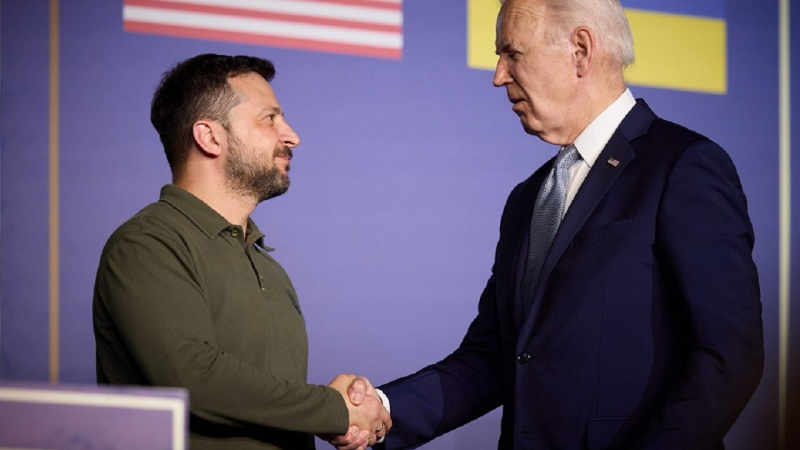
Photo: OPU
In parallel with this, there is a point with the political situation, namely, that internal political instability in Western countries, such as the United States, can lead to the fact that Republican Donald Trump, who can win the election in the USA, may cancel the agreement with Ukraine, or simply not adhere to it.
— Therefore, when it comes to the agreement with the United States, it is both the strongest and the weakest. The strongest because it is very detailed, and because, unlike the agreements with other countries within the G7, it is not really a security cooperation agreement, but a security agreement. It contains broader and more specific clauses, and there are certain binding parts, — explains the political scientist.
It remains an open question whether this agreement will be submitted to the US Congress for ratification.
— If Congress votes for it (agreement, — Ed.), then this will give it the status of a political and legal nature. Of course, the format of this agreement itself does not provide for ratification, so it will not be a purely legal document. But it can become a political, legal and international document. And this is an additional binding force. If this happens, it will give him strength. If this does not happen, then indeed any next President of the United States may simply refuse to implement it, — explains the political scientist.
The same applies to other agreements, Sahakyan believes. But this does not make these documents fictitious treaties, such as the Budapest Memorandum, since the document signed in 1994 in Budapest guaranteed general principles and consultations, like “we will help you” and that's it.
— And these security agreements, they describe exactly how they will help, in what time frame, how these consultations are collected and when, what equipment is provided now, what equipment will be provided later, what needs are, how they are determined. It also carries mechanisms, — he explains.
Separately, the political scientist points out that these security agreements “are fair”, since the signatories admit that they are not yet ready to guarantee the implementation of specific points or specific obligations and take them upon yourself, “because at such moments of destruction of the global order, these guarantees are simply impossible”, explains Sahakyan.
Therefore, he continues, if international actors do not agree to give such guarantees, then this speaks precisely of the adequacy of the fact that they understand that it is not a fact that they will be able to adhere to these agreements “ 8221;.
— And it is important for us not to have such illusions. And these agreements create a very broad framework for cooperation. This is not about fish as safety. It's about the fishing rod, the opportunity to catch that fish. Correct use of these treaties will allow Ukraine to ensure its own security. Starting from the exchange of intelligence data, weapons production, technology transfer, joint exercises, joint programs, many different areas that are regulated by these agreements, and within the framework of them intergovernmental agreements can then be signed, between agreements between economic entities, for example, weapons manufacturers, & #8212; he says.
In addition, Oleg Sahakyan summarizes, some of these agreements are of a secret nature, so it is likely that there are already certain signed framework agreements.

